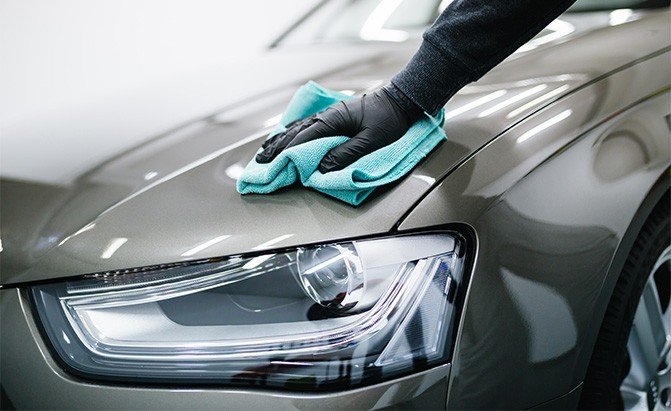
During the cold winter months, you'll want to invest in winter car accessories. Although snow tires are the obvious choice, you also have heated steering wheel covers, block heaters, heated seats, and heated blocks. These accessories will keep you warm and comfortable, as well as your passengers. There are many choices available, so it's easy to find the perfect product for you. Continue reading to find out more about these accessories.
Snow tires
You've probably heard that snow tires can be beneficial as winter car accessories, but did you know that they're also a good way to keep your car warm? Although winter driving is enjoyable, it can also be dangerous if you aren't prepared for the conditions. With the proper winter car accessories, you can keep your passengers safe and have a blast at the same time. These are the top winter car accessories you should buy.

Heated seating
You can use heated seats in your car to keep you warm in cold climates. The special liquid in them can help you melt ice quickly, which saves you from the hassle of using an ice scraper or credit card. If your car has leather or vinyl seats, you will know how uncomfortable they can become in winter. Heated seat covers will allow you to remain warm and comfortable when driving.
Block heaters
Canada is proud to have a block heater as a part of our culture. These simple, yet effective devices have helped save more engines from freezing and allowed people to get work done on time. These heaters aren't necessary on every car, but they can reduce morning idle by keeping your engine block in good condition. Read on to learn more about the benefits of block heaters. You won't want to live without one once you have used it.
Heated steering wheel covers
A heated steering wheel cover is a great way to keep warm if you live in colder climates. The covers wrap around your steering wheel and provide warmth for 35 minutes. The battery life is approximately three hours. They are simple and safe to use. These winter car accessories can be used year-round. Drivers can also use them in the winter months when it is too cold to put on gloves.
Custom cargo trays
If you love to drive in the winter, customize your cargo area with a custom cargo tray. Your car's cargo can be kept clean and protected by custom cargo trays. Kia cargo trays are designed for your car and can protect your cargo area from snow or ice. A snow and ice scraper is another essential winter car accessory. The scraper comes with a telescoping handle that will allow you to move it around and clean your windows.

Reflective red triangles
A reflective triangle in red is essential for winter. The triangle is placed 20m behind the vehicle that is stalled. It alerts other drivers to the possibility of danger. New York's December pileup saw 40 cars covered in twisted metal following a December accident. Police found no warning triangle at the accident site, according to a report. It is never too early for you to start thinking about your next winter car accessory.
FAQ
How long is an automotive mechanic apprenticeship
It takes three years to complete an apprenticeship as an automotive mechanic. This includes two years at school and two years working as an apprentice. The first year teaches you all aspects, from theory to practical skills and safety procedures. You will also learn to use tools efficiently and safely during this period. After the completion of the first year, you will spend another year on the job training. Here you'll gain valuable experience in different trades. These years will offer you the opportunity to attend formal classes.
The final year of the program is spent gaining qualifications and becoming certified in the field. These include NVQs (National Vocational Qualifications), that are given after passing specific industry exams. The HNCs (Higher National Certificates), on the other hand, cover general subjects like customer service and management. City & Guilds certificates offer qualifications in certain trades.
What length is an automotive course?
A three-year course in automotive is required.
The first year is dedicated to theory and learning about cars. The second year is dedicated towards practical training. This includes learning how to drive, fix engine problems, and doing other maintenance jobs around your car. The last year is spent at a local shop, where you will get practical experience with real-world problems.
What qualifications are required to become a mechanic
A series of exams is necessary to become a mechanic. These exams include:
-
A general knowledge exam
-
A practical exam
-
An apprenticeship test
These tests are designed for you to understand the basic concepts and principles of mechanics before your start as a technician.
You'll be eligible for work as a mechanic after you have passed the tests. However, you'll still need to complete an apprenticeship. This will require you to learn the trade.
To learn all you can about vehicle repair, you will need to take classes and workshops. Additionally, you will need to work with experienced mechanics.
A mechanic must be highly focused and attentive to detail in order to succeed. You will need to pay careful attention to every aspect when repairing vehicles.
To be a successful mechanic, patience and perseverance are essential. If you don’t enjoy following instructions, this might not be the right career path.
You could make a great career out of your love for cars and the work that goes into fixing them.
Are you looking for a career as an automotive mechanic?
For those who are passionate about excellence, automotive is a rewarding industry. You can only succeed in this field if you work hard and learn from others.
Your job will require you to be a good communicator as you'll be talking to customers and other employees. You must also be willing and able to travel long distances, which can make it difficult to commute.
If you're interested in pursuing a career in automotive, consider taking classes at community colleges and universities. Many schools have programs that are specifically tailored for students who are interested in automotive sales, repair, and customer service.
Mechanical engineering is a good choice if you are interested in pursuing a degree. A bachelor's degree can be obtained in four years.
Many companies will hire students straight out of college. Therefore, it is a good idea to look for employment while still pursuing part-time studies.
After you've finished your education, it's likely that you'll need to go through some training before you can be hired as an auto technician.
This means that you must pass the Automotive Service Excellence exam. This test covers topics including engine maintenance, brakes, steering systems, suspension, and more.
Once you have passed the ASE Test, you are eligible to apply for a National Institute for Automotive Service Excellence License.
You can repair vehicles owned by private citizens with a license. In exchange, you'll receive compensation based on the number of services performed.
It's important to note that not all states require licensing. However, licensing is required for anyone who plans to work outside the home state.
Some states do not issue licenses until they have received a certain amount or training. If this applies to you, then you may need to find another option.
Statistics
- The U.S. Bureau of Labor Statistics (BLS) reports that the job outlook for automotive service technicians and mechanics is expected to decline by 4% from 2019 to 2029. (indeed.com)
- 52% of Mechanics in the United States think their salaries are enough for the cost of living in their area. (indeed.com)
- Apprentice mechanics earn significantly less hourly than mechanics who have completed training, with a median wage of approximately $14.50 an hour, according to PayScale. (jobhero.com)
External Links
How To
How to properly diagnose your vehicle for repair
Before you can determine if your car requires repairs, it's important to first analyze the symptoms. These steps will help you diagnose your car properly.
-
Check engine lights. The dashboard light indicators, including the engine light, oil pressure gauge, battery light indicator, coolant temperature gauge and RPM gauge, should be checked. It could indicate that your vehicle is having problems.
-
Pay attention to the treads on your tires. Tire wear can lead to problems in handling and brake performance. The treads of the wheels should be inspected as well. They should be clean, and they should be smooth. The best way to do this is to remove the wheels and take them off. Use a flashlight to see how well the treads are worn.
-
Check the level of brake fluid. It is important to keep track of how much brake fluid you have in your car. You can ensure that your brakes are working properly by monitoring the level of brake fluid in your vehicle. Low brake fluid levels could cause your brakes to fail when you apply pressure.
-
Make sure to test the suspension system. Most vehicles have a suspension system that absorbs shocks and vibrations. It improves control and allows for smoother accelerations or decelerations. You might notice a wobbly feeling or uncontrollable shaking in your vehicle if it has a problem with its suspension. If you are unsure if your vehicle is suffering from a suspension problem, put weight on the front and rear axles to check the movement.
-
Examine the steering column. Steering columns are used to connect the steering wheel to the rest of the vehicle's components. Sometimes, steering columns are damaged by accidents. It is recommended to replace any steering column that feels loose, or shakey.
-
Pay close attention to the exhaust tube. Exhaust pipes help move gases from the combustion chamber to the atmosphere. Exhaust pipes that are cracked or leaking can allow harmful fumes to enter your cabin. It is also important to repair any bends in your tailpipe immediately.
-
Look under your hood. Check under your hood for any unusual or missing components. You could have fluids leaking from the engine. If you smell something strange coming from your engine compartment you should call a professional technician.
-
It is important to inspect the air filter. The vehicle's outside environment may cause the air filter to collect dust and debris. Your vehicle will run less well if it has a dirty filter. Replace your air filter regularly.
-
The fan belt should be checked. Your vehicle's fanbel is what connects the engine and the transmission. If it breaks, the engine won't turn over. The process of replacing the belt is straightforward. All you need is a screwdriver and some pliers.
-
Check the radiator hose and hoses. The radiatorhose carries water from your radiator to the engine. It can cause hot liquid to leak onto the engine if it is damaged or cracked. You only need a pair of needle-nose pliers and a small wire brush to repair the hose.
-
Be sure to inspect your windshield wipers. Windshield wipers use electricity to remove snow and rain. If they stop working, they could leave streaks on your window glass. Simply change the washer oil to fix the problem.
-
You should inspect the cables. Batteries provide power to electrical systems inside your car. When you replace batteries, make sure to disconnect the negative cable first. Failure to do so can damage your alternator.
-
Pay attention to your headlights. The headlights will illuminate the road ahead. It can lead to poor visibility if they aren't working properly. To determine if your bulbs are out of date, check them.
-
Check the lights. If you approach other drivers at night, lights will warn them. It could cause distraction and even lead to an accident if it doesn't work.
-
Inspect your brakes. Before you collide with another vehicle, brakes will slow down the car. If the brakes fail to work correctly, your car could lose control and collide with another vehicle.
-
Change the oil. The oil keeps your engine well lubricated. It prevents metal parts from rusting too quickly. It is recommended that you change your oil at least once per month.